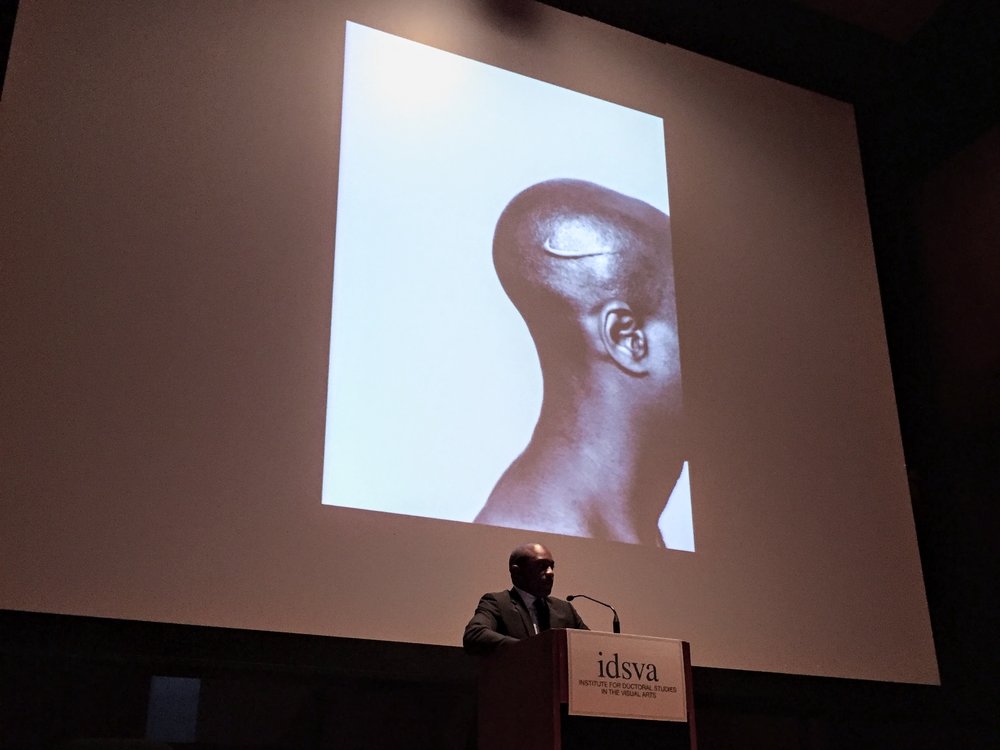Empathetic To Truths: Resolving Interpersonal Conflict Through the Work of Hank Willis Thomas
April 10, 2017
Eric Bess, Cohort ’16

It was a pleasure to listen to Hank Willis Thomas present his artworks and philosophy. As a young African American artist, it was the first time I had seen and heard a successful African American artist in person. I was infected by the obvious energy and passion he had about his work and ideas. I was struck by the experience and questioned my own approach to my practice.
There were several pieces of Thomas’ work that really stood out to me. The Branded Head and The Truth Booth were two pieces that made me think critically about my own thoughts concerning race and personal identity in America. In Branded Head, Thomas satirizes Nike by displaying an image of a Black man’s head branded with the Nike logo. He suggests that through corporate propaganda, the individual—especially within the Black community—is voluntarily, yet unknowingly, perpetuating the tradition of human branding. This modern form of slavery keeps individuals and communities within the confines of an ideology that perpetuates a dependency on a contemporary master/slave dynamic. Those who fall victim to this form of ideological propaganda identify their self-worth with a personal attachment to the brand.

I thought of the Willie Lynch Letter and how making a slave requires the breaking of the human spirit which results in a dependency on the master. I also thought of how words, how language, how images can brand an individual as a type; I thought of minstrel shows. These stereotypes placed upon minority communities are indeed detrimental and oppressive to so many. I, however, could not help but also think about the White community and how many of them are, at least according to my personal experience within the Black community, so often branded as uninterested in the Black experience and, at times, as inherently racist. I thought of my grandmother as a French immigrant. As a White woman married to a Black man living in a predominately Black community with biracial children, she often relates the pain she felt in navigating the hatred directed at her; the pains expressed by a minority community indoctrinated in the ways of branding the other. Branding begets branding.
The Truth Booth provided a response and possibly a resolution to this issue. Instead of engaging in conflict with the other, The Truth Booth allows one to share a personal understanding, experience, secret, etc. It encourages turning inward to reconcile outward conflict; the participants share a gift of the self without asking for a return on their investment. The result is a moment of self-cultivation toward charity; the viewers of the exposed truths realizes that their secrets—their pains and struggles and joys—are more similar than not to those of the other. This moment of focus on the charitable giving of the self and the similarities between selves can be the starting point for real resolution between the existing master/slave dynamic expressed by Thomas.
